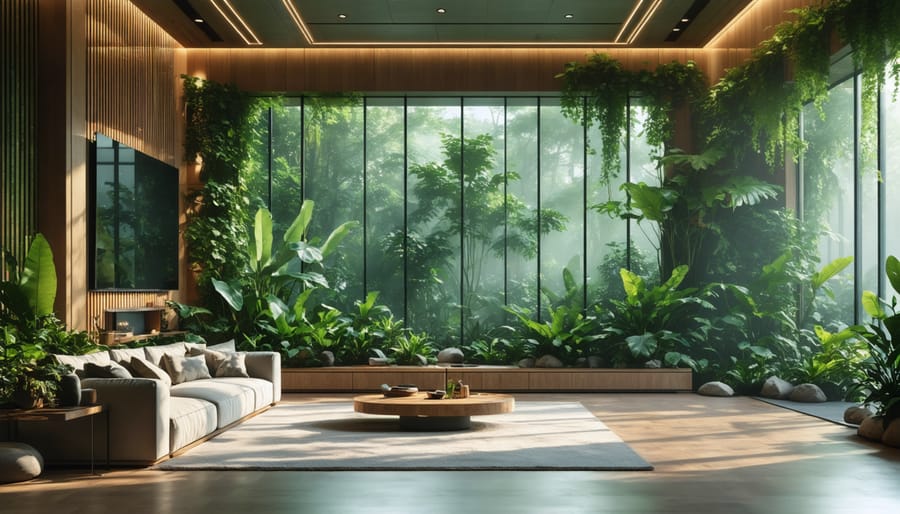Maximize your space and style by opting for modular furniture. Blend form and function effortlessly: start by measuring your available area to ensure optimal fit and flexibility. Choose pieces with interchangeable components like shelving units or seating, which can be reconfigured to meet changing needs or preferences. Embrace creativity with color and fabric variations to personalize your space and create visual harmony. Invest in quality connectors and fasteners, ensuring stability and safety in your modular setups. With these steps, transform your living space into an adaptive and inspiring environment.
What is Modular Furniture?

Key Features of Modular Furniture
Imagine transforming your space whenever the mood strikes, thanks to the adaptability of modular furniture. This innovative approach offers an incredible level of flexibility, allowing you to easily adapt each piece to suit your needs or an evolving space. Whether you’re a renter who moves often or a homeowner eager for frequent changes, modular furniture provides the ideal solution. Each component can be rearranged, added, or removed like building blocks, creating limitless design possibilities.
One of the standout features is ease of modification. Many modular systems are designed with simple connectors or sliding mechanisms, making it a breeze to customize your setup without any special tools. This is great news for DIY enthusiasts looking to put their personal stamp on their home. Plus, modular pieces often serve multiple functions, such as a sectional that doubles as a bed. With its combination of versatility and user-friendly design, modular furniture delivers both practicality and creative expression.
Common Materials and Design Styles
When it comes to modular furniture, you’ll find a delightful variety of materials and design styles that meet both practical needs and aesthetic desires. Many pieces are crafted from sustainable options like bamboo or recycled metals, aligning with the trend of eco-friendly materials to create pieces that are not only stylish but also responsible choices for your home. Design styles range from ultra-modern sleek lines to cozy, rustic vibes that evoke warmth and comfort. Whatever your preference, modular furniture provides the flexibility to adapt these styles to your unique space, making it as dynamic and personalized as your imagination allows.
Benefits of Modular Furniture for Your Home
Space Optimization
Modular furniture is a game-changer when it comes to space optimization, especially for those living in bustling urban areas where every square foot counts. These versatile pieces are designed to adapt to your needs, allowing you to configure them in various ways to perfectly fit your space. Need extra seating for guests? Simply reconfigure your sectional sofa components. Need more workspace? Add or subtract modular desk units as you please. This flexibility helps create a dynamic living environment that can grow and evolve with you. For renters, modular furniture is particularly appealing since it can be easily modified and transported to different homes. By investing in these adaptable pieces, you can truly maximize your living area, making your home both functional and stylish.

Customization and Flexibility
Modular furniture opens the door to endless possibilities for customization, making it a dream come true for DIY enthusiasts. Imagine tailoring your furniture to fit any space or design preference without being locked into a static setup. Whether you’re a fan of rearranging your living room for new visual styles or need a flexible work-from-home nook, modular pieces adjust to your needs. These furniture systems offer a variety of modules that you can mix and match to create unique combinations, providing a personalized touch to any room. Need a bigger sofa for movie nights or extra shelving to display your latest DIY project? Simply reconfigure or add new modules. This level of flexibility encourages creativity, letting you transform your space effortlessly and affordably.
How to Incorporate Modular Furniture into Your Home
Choosing the Right Pieces
Choosing the right modular furniture pieces starts with understanding your lifestyle and space needs. Begin by assessing the room’s primary function. Is it a lively family room or a serene office space? Modular sofas with interchangeable sections are excellent for living areas, allowing you to adjust and expand seating as your family grows or guests arrive. For a home office, opt for modular desks that can adapt to different tasks and spaces.
Consider your storage needs—modular shelving units are perfect for adapting to varying room sizes and requirements, helping to keep clutter at bay. Also, think about frequency of change. If you love to update your decor often, focus on versatile designs that can easily transition with your tastes. Think of pieces that are lightweight or have wheels for easy movement.
Lastly, stay mindful of aesthetics to ensure the furniture complements existing decor. Start with a neutral base that allows colorful or textured accents to shine, creating a cohesive and visually pleasing environment.
DIY Ideas for Modular Furniture
Imagine transforming your living spaces with custom modular furniture pieces that reflect your personal style without breaking the bank. Start with a basic modular shelf; you only need some wooden crates or boxes. Stack them in various configurations to create a bookshelf or a chic storage solution. Secure the boxes with screws or brackets for stability. If you’re feeling adventurous, sand them down and apply a coat of paint or wood stain to match your decor.
Moving on to seating, you can build a modular sofa using wooden pallets. Arrange the pallets into your desired shape—an L or U configuration works well—then cover them with foam cushions and vibrant fabric covers. This setup is not only customizable but also instantly upgradeable for changing tastes or spaces.
For small spaces, consider building a multifunctional coffee table with stackable cubes. These can serve as both storage and seating, offering flexibility as your needs change. With a touch of creativity and some basic tools, you can easily bring these DIY modular ideas to life, crafting furniture that fits your unique space and lifestyle.
Expert Tips on Purchasing Modular Furniture
When diving into the modular furniture market, remember that flexibility is your best friend. Start by assessing your space and lifestyle needs. Consider pieces with multiple configurations or those that can evolve as your circumstances change. It’s essential to check the build quality—opt for durable materials like solid wood or metal for longevity. Don’t shy away from mixing styles; modular furniture is designed to adapt and fit seamlessly into diverse interiors.
One common misconception is that modular equals expensive. With a bit of smart shopping, you can find budget-friendly options that still offer excellent adaptability. Use customer reviews and product comparisons to gauge the performance and satisfaction levels of your chosen pieces. Finally, don’t underestimate the power of a hands-on approach—explore DIY options to customize your furniture, ensuring it perfectly matches your unique taste and functional requirements. With these expert tips, you’ll be well-equipped to make informed choices that enhance your living space’s versatility and style.
Conclusion
Modular furniture stands out for its remarkable adaptability and ability to transform any living space into a personal sanctuary. By investing in these versatile pieces, you’re not only enhancing your home’s aesthetic appeal but also embracing functionality tailored to your unique needs. Whether you’re renting or owning, modular furniture can easily reconfigure and resize, fitting perfectly into any room, big or small. It’s an excellent choice for creating a cozy home without major renovations. So, when designing your space, consider incorporating modular pieces to enjoy a dynamic and evolving home environment that grows with you.





